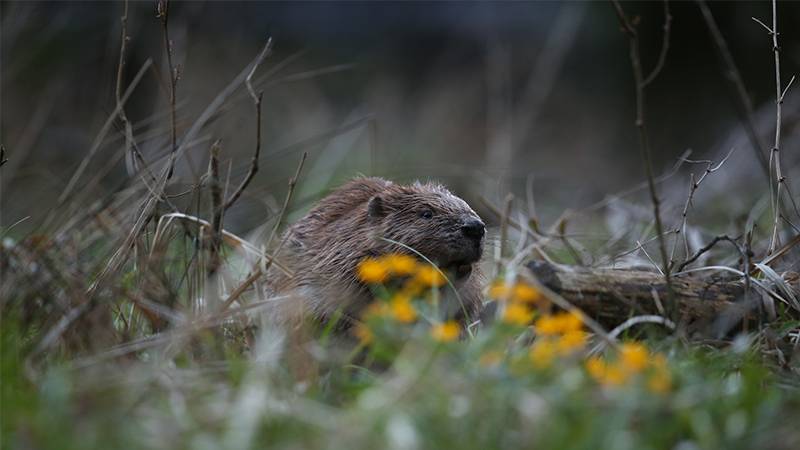In a remarkable discovery, a baby beaver was spotted in the Bay Area’s Matadero Creek, marking the first sighting of its kind in over 160 years. The discovery was made by Bill Leikam, the president and co-founder of the Urban Wildlife Research Project, while reviewing footage from his trail cameras last month. Leikam, also known as “The Fox Guy,” has been dedicated to studying the habitat expansion and resurgence of gray foxes in the Palo Alto Baylands for over a decade. His recent find, however, diverged from his usual subjects of study.
Upon noticing the unusual creature scurrying across the screen, Leikam enhanced the image to get a closer look, eventually realizing that it might be a baby beaver. Seeking confirmation, he reached out to wildlife experts including Rick Lanman, a historical ecologist, and Heidi Perryman, president of the nonprofit organization Worth a Dam. The experts affirmed that the young beaver was indeed the first to be born in the creek in more than a century and a half, possibly descending from a pair of beavers spotted in the area last year.
The history of beavers in the region is a tragic one, with the last known beaver in the Santa Clara Valley being trapped and killed in 1855. Beavers, once native to Northern California, faced near extinction due to overhunting during the California fur rush in the 1800s. By 1912, the beaver population in the state had dwindled to fewer than a thousand. The current beaver family in Matadero Creek traces back to individuals reintroduced to the nearby Los Gatos Creek in the 1980s by the California Department of Fish and Wildlife.
They confirmed his suspicion: that the beaver kit was the first born in the creek in more than 160 years, and very well may be the offspring of the two other beavers that were spotted in the waterway last year.
The young beaver, estimated to be around four months old, was likely exploring its surroundings when it was captured on camera, exhibiting a behavior Leikam notes is common to many young wild animals, driven by an “insatiable curiosity.” The sighting has sparked hope among experts, who see the potential for beavers to play a pivotal role in enhancing biodiversity in the region. According to SFGATE, their ability to create new wetland habitats could aid in the recovery of near-extinct species such as the coho salmon by fostering environments rich in plankton and insects, a vital food source for many species.
Moreover, beavers’ natural tendencies to retain water can offer a range of environmental benefits, including drought mitigation and supporting climate change resiliency, according to Ken Paglia, a spokesperson for the California Department of Fish and Wildlife. Their presence could even help in slowing the spread of wildfires, a pressing concern in the state.
Looking ahead, Leikam anticipates the beaver family might expand their territory to the San Francisquito Creek, approximately two miles north of their current habitat. While it might take years, Leikam envisions the beavers eventually reaching the Santa Cruz Mountains, marking a slow yet hopeful resurgence of the species in the region, and potentially heralding a richer, more diverse ecosystem in the Bay Area. This historic sighting, therefore, not only represents a beacon of hope for the recovery of the beaver population but also signifies a promising step towards a more biodiverse and resilient environment.
More inspiring green news similar to this:


